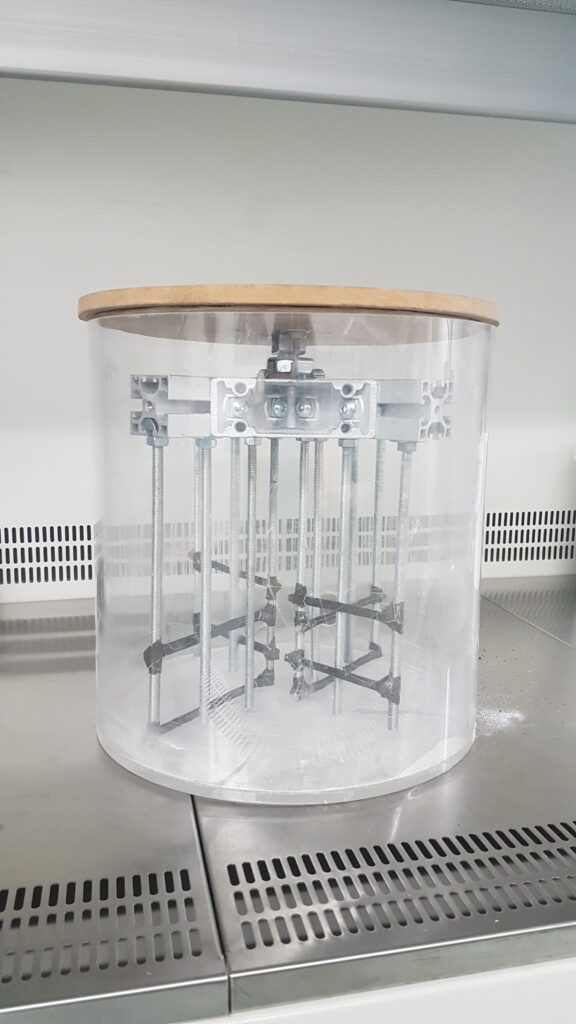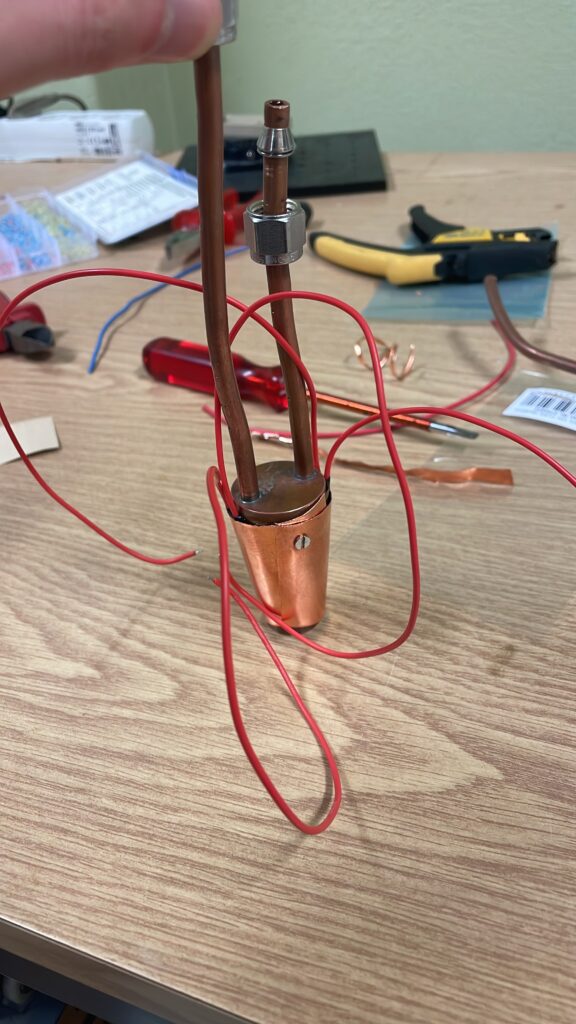To get water from lunar icy-regolith, one needs to extract it and then capture it. For the LUWEX project, we designed a cold trap water vapour capturing system, and through this experiment, verified that the functional design of the cold trap works.
The cold trap operates under a near vacuum (only a small atmosphere of water vapour is present) and traps the water vapour that deposits on its surface due to its extremely cold temperature. After enough ice is gathered around the cold trap, a heater installed underneath the surface is turned on, which quickly raises the surface temperature of the cold trap, and causes the built-up ice to slide off and fall into a collection chamber. After this, we measure the amount of water that we put into the system, and how much we collected, so that we can determine the efficiency.
To thermally extract water from lunar icy-regolith, one needs to heat up the regolith to the sublimation point of the ice. However, regolith is notoriously known to have an extremely low thermal conductivity, meaning it is very hard to get the energy into the ice. For the LUWEX project, we want to test methods to speed up this extraction process, and have therefore decided to stir the icy-regolith sample in order to distribute the heat more evenly.
Whilst stirring might not be the preferred design solution on the Moon, for our experiment, it will help gain insight into the benefits of having a dynamic versus a static system, and at the same time, reduce the extraction time.


